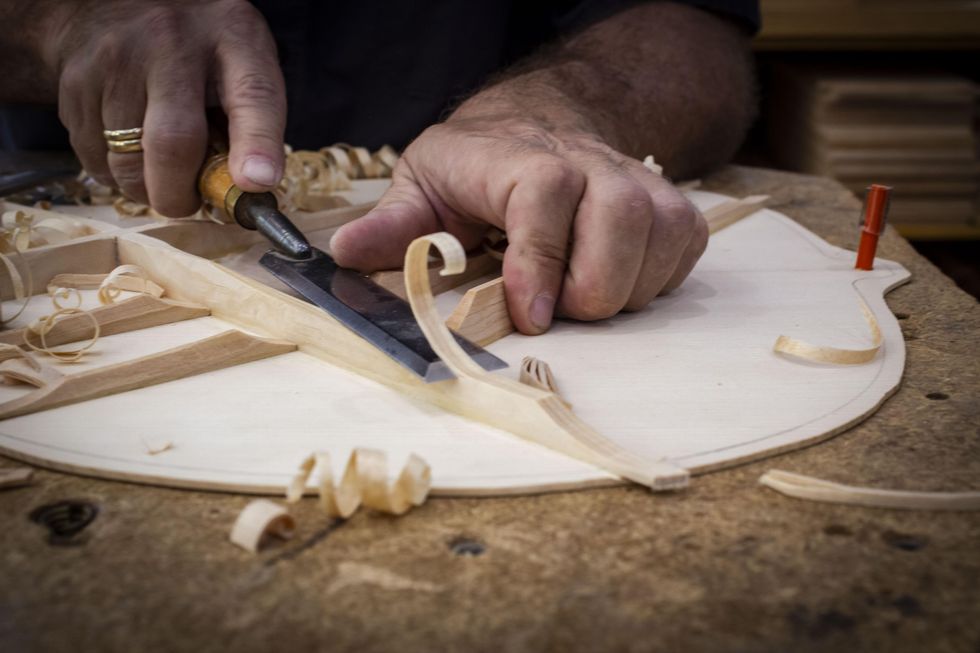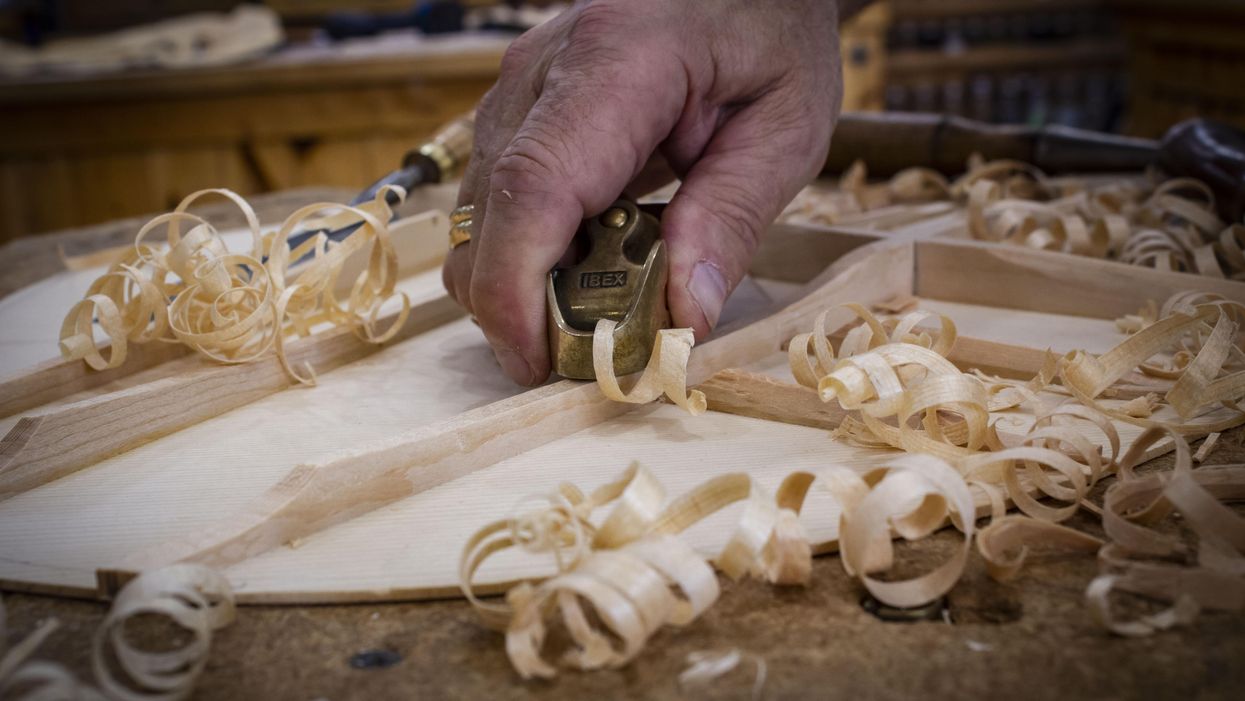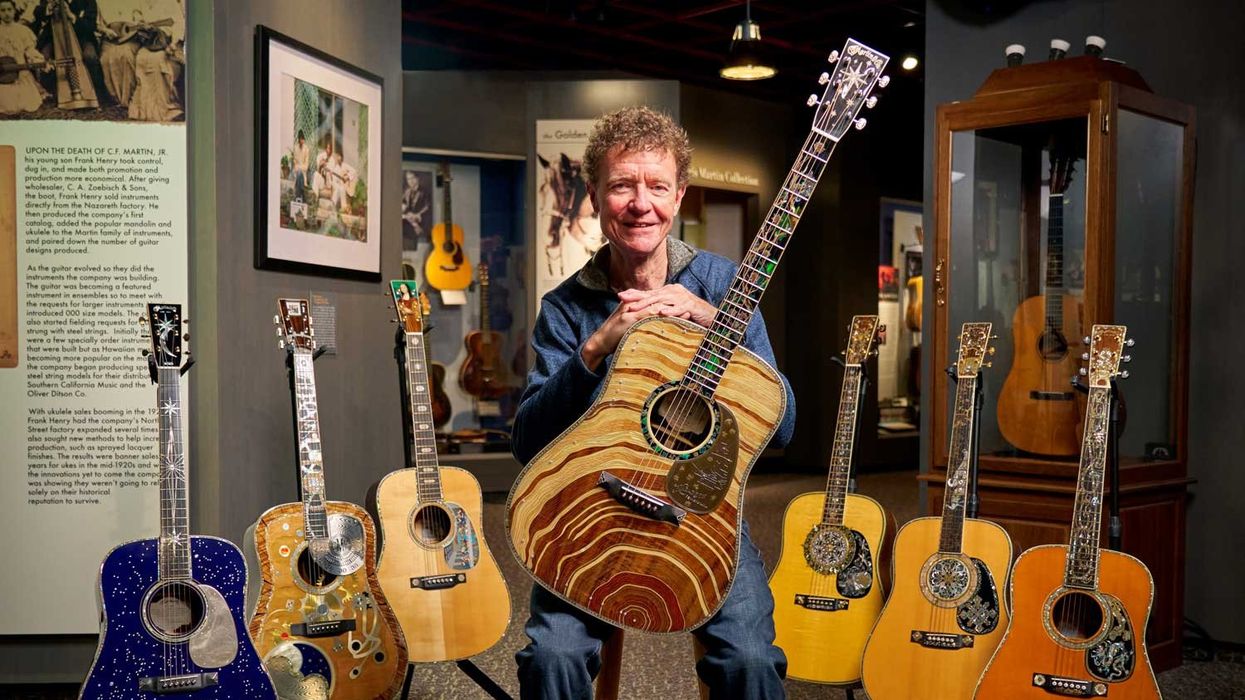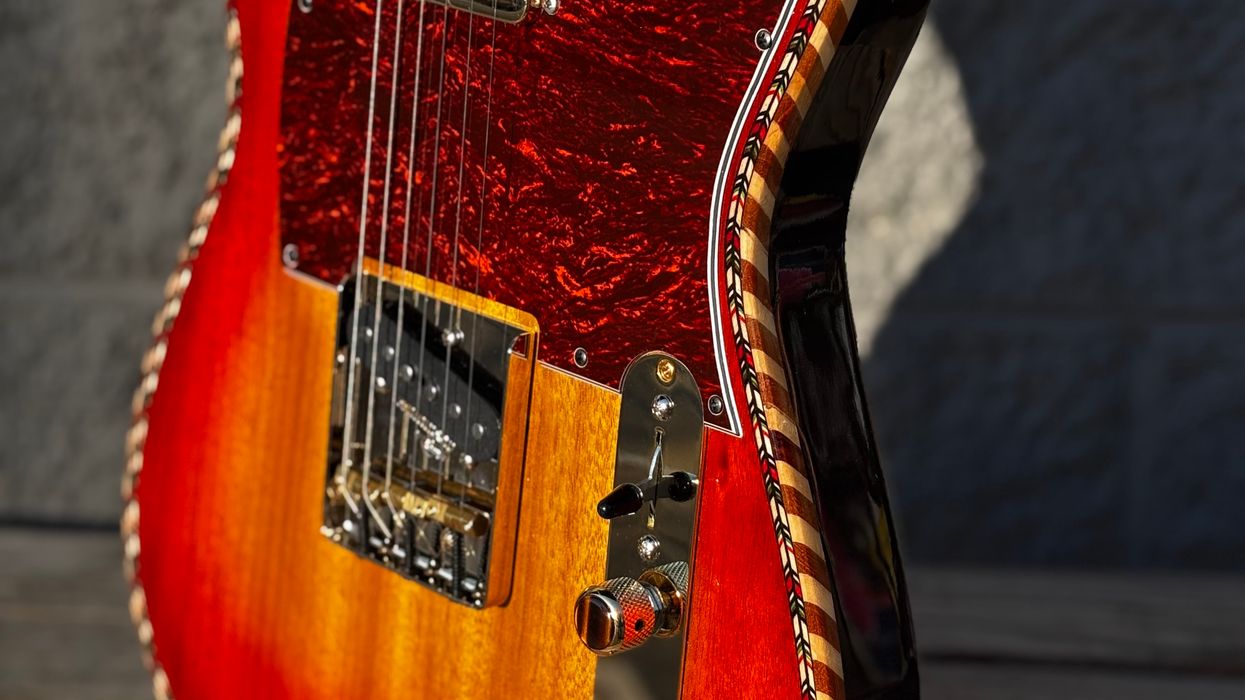Acoustic guitar bracing is something the general guitar-buying public rarely considers. And why would they? A guitar's braces are hidden on the inside of the instrument and, with the exception of the back braces, are never seen at all. However, the fact remains: When a bracing system is combined with the soundboard's material, it has the single most profound effect on the performance of a guitar. At their best, a guitar's braces help to offer superior sound, response, and reliability. At their worst, they are either overbuilt, which makes a guitar feel laborious to play, or are underbuilt and fail prematurely. Guitarists simply need an understanding of what the various bracing styles are communicating, how they affect the soundboard, and what that might mean to the player.
Early Spanish-style classical guitars used gut strings. These low-tension strings allowed the soundboards and bracing to be thin and light. In the mid-1800s, the Martin Guitar Company worked to increase the stability of their soundboards, which ultimately culminated in the creation of the X-bracing pattern. At the birth of this innovative design, X-bracing was offered on gut-string guitars. As steel strings became more popular, X-bracing was recognized for its ability to ideally accommodate the increased tension. This marked a clear break between Spanish-style classical instruments and what would soon become the modern flattop steel-string guitar.
When a bracing system is combined with the soundboard's material, it has the single most profound effect on the performance of the guitar.
As flattop builders worked to perfect the stability of this newfound bracing pattern, they continued to improve upon the sound of their guitars. Through shaping braces to lighten the system and by changing carving techniques, instrument makers found they were able to control soundboard flexibility. Many different bracing shapes emerged over time, each of which possess unique perks.
Shortly after the end of WWII, makers began tapering their braces, which resulted in a shift that defiantly changed the sound and feel of these bracing systems. Guitars with tapered bracing have material removed from the perimeter of the braces, thereby "tapering" these braces back toward the bridge. Unlike scalloping, tapering shifts flexibility to the perimeter of the guitar. These tops routinely have a higher voice, giving the instrument a more responsive and defined sound that's quicker to the touch.
The most celebrated vintage steel-string bracing system is the scalloped brace. Guitars with scalloped braces are voiced by removing material in a scooping motion from the center of each brace. This makes the tops more flexible in the center, primarily underneath and directly behind the bridge. These guitars typically have a lower fundamental with a round and full high end.

Tapered braces have material removed from the outer end of the brace, making the perimeter of the guitar more flexible.
I grew up on a 1957 Martin D-18, which was a great example of what tapered braces had to offer. Over time, I picked up a 1941 D-18 with scalloped braces. Even though these guitars were identical models, I had a preference depending on what style I was playing. In time, I perceived that I liked the 1957's tapered brace sound for flatpicking due to its quick response and separation of notes. But my 1941's lower fundamental was killer for rhythm accompaniment, something I found myself doing a lot of in the shank of my playing career.
Other options to consider were models like Martin's D-35 or Gibson's Country Western. Both of these guitars used lighter and smaller bracing absent of any scallop or taper. Instead, the smaller braces evenly dispersed the load throughout the top. While these lightly braced guitars confused many die-hard dreadnought players, the lower resonance and softer feel proved to be notably popular with fingerstyle performers and electric guitar players looking for an acoustic instrument with a lighter feel.
At this point, I should note that I'm referencing and comparing long-scale guitars. Even though it's true that the lower string tension on a shorter scale might simulate some of the topics I'm referring to, that is a topic unto itself. Regardless, don't be influenced by the hype surrounding bracing styles and become convinced it's a feature you must add to your collection. Instead, consider some of these observations to help you find a guitar that optimally complements your playing style.















